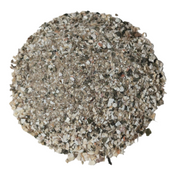This is such an interesting topic I had to post some literature.
Many people have seen the movie or been mislead by the book called, "The Secret Life Of Plants"
Check out this much better book, http://www.whataplantknows.com/
"What A Plant Knows"
I hope the author doesn't mind, I took part of a chapter and have typed it below. If you think this info is good, you have to get the book, it's full of really good factually supported info.
Here is some info regarding Music and Plants.
Forests reverberate with sounds. Birds sing, frogs croak, crickets chirp, leaves rustle in the wind. This never-ending orchestra includes sounds that signal danger, sounds related to mating rituals, sounds that threaten, sounds that appease. A squirrel jumps on a tree at the crunch of a breaking branch; a bird answers the call of another. Animals constantly move in response to sound, and as they move, they create new sounds, contributing to a cyclical cacophony. But even as the forest chatters and crackles, plants remain ever stoic, unresponsive to the din around them. Are plants deaf to the clamor of a forest? Or are we just blind to their response?
While various forms of rigorous scientific research have helped shed light on the plant senses we’ve covered so far, little credible, conclusive research exists when it comes to a plant’s response to sound. This is surprising, given the amount of anecdotal information we have about the ways in which music may influence how a plant grows. While we may think twice when we hear that plants can smell, the idea that plants can hear comes as no surprise at all. Many of us have heard stories about plants flourishing in rooms with classical music (though some people claim it’s really pop music that gets a plant moving). Typically, though, much of the research on music and plants has been carried out by elementary school students and amateur investigators who do not necessarily adhere to the controls found in laboratories grounded in the scientific method.
Before we delve into whether or not plants can actually hear, let’s get a better understanding of human hearing. A common definition of “hearing” is “the ability to perceive sound by detecting vibrations via an organ such as the ear.” Sound is a continuum of pressure waves that propagate through the air, through water, or even through solid objects such as a door or the earth. These pressure waves are initiated by striking something (such as by beating a drum) or starting a repeated vibration (like plucking a string) that causes the air to compress in a rhythmic fashion. We sense these waves of air pressure through a particular form of mechanoreception by tactile-sensitive hair cells in our inner ears. These hair cells are specialized mechanosensory nerves from which extend hairlike filaments called stereocilia that bend when an air-pressure wave (a sound) hits them.
The hair cells in our ears convey two types of information: volume and pitch. Volume (in other words, the strength of the sound) is determined by the height of the wave reaching the ear, or what’s better known as the amplitude of the waves. Loud noises have high amplitude, and soft noises have low amplitude. The higher the amplitude, the more the stereocilia bend. Pitch, on the other hand, is a function of the frequency of the pressure waves—how many times per second the wave is detected regardless of its amplitude. The faster the frequency of the wave, the faster the stereocilia bend back and forth and the higher the pitch.
As the stereocilia vibrate in the hair cells, they initiate action potentials (as do other types of mechanoreceptors that we encountered in the previous chapter) that are relayed to the auditory nerve, and from there they travel to the brain, which translates this information into different sounds. So human hearing is the result of two anatomical occurrences: the hair cells in our ears receive the sound waves, and our brain processes this information so that we can respond to different sounds. Now, if plants are capable of detecting light without having eyes, can they detect sound if they don’t have ears?
ROCK AND ROLL BOTANY
At one point or another, many of us have been intrigued by the idea that plants respond to music. Even Charles Darwin (who, as we’ve seen, carried out his seminal research into plant vision and feeling over a century ago) studied whether plants could pick up on the tunes he played for them. In one of his more bizarre xperiments, Darwin (who, in addition to his lifetime commit-ment to biology research, was an avid bassoonist) monitored the effects of his own bassoon music on plant growth by seeing if his bassoon could induce the leaves of the Mimosa plant to close (it couldn’t, and he described his study as a “fool’s experiment”).
Research dealing with plant auditory prowess hasn’t exactly blossomed since Darwin’s failed attempts. Hundreds of scientific articles have been published in the last year alone that deal with plant responses to light, smell, and touch, yet only a handful have been published over the last twenty years that have dealt specifically with plant responses to sound, and even then many of them don’t hold up to my standards for what would be evidence of a “hearing” plant.
An example of one of these papers (albeit a zany one) was published in The Journal of Alternative and Complementary Medicine. It was written by Gary Schwartz, a professor of psychology and medicine, and his colleague Katherine Creath, a professor of optical sciences, both based at the University of Arizona, where Schwartz founded the VERITAS Research Program. This program “test[s] the hypothesis that the consciousness (or personality or identity) of a person survives physical death.” Obviously, studying consciousness after death presents some experimental difficulties, so Schwartz also studies the existence of “healing energy.” Because human participants in a study can be strongly influenced by the power of suggestion, Schwartz and Creath used plants instead, in order to uncover the “biologic effects of music, noise, and healing energy.” Of course, plants cannot be influenced by the placebo effect or, as far as we know, by musical preferences (though researchers carrying out and analyzing experiments can be).
They hypothesized that healing energy and “gentle” music (which consisted of Native American flute and nature sounds, which they noted were preferred by the experimenter) would be conducive to the germination of seeds.11 Creath and Schwartz explained that their data revealed that slightly more zucchini and okra seeds germinated in the presence of gentle music sounds than seeds that were kept in silence. They also noted that germination rates could increase as a result of Creath’s healing energy, which she applied to the seeds with her hands.12 It goes without saying that these results have not been validated by subsequent research in other plant laboratories, but one of the sources Creath and Schwartz cited in support of their results was Dorothy Retallack’s The Sound of Music and Plants.
Dorothy Retallack was a self-described “doctor’s wife, housekeeper and grandmother to fifteen,” and she enrolled as a freshman in 1964 in the now-defunct Temple Buell College after her last child had graduated from college. Retallack, a professional mezzo-soprano who often performed at synagogues, churches, and funeral homes, decided to major in music at Temple Buell. She took an Introduction to Biology course to complete her science requirements and was asked by her teacher to carry out any experiment that she thought would interest her. Retallack’s juxtaposing of her biology requirement with her love for music resulted in a book spurned by mainstream science but quickly embraced by the popular culture. Retallack’s The Sound of Music and Plants provides a window into the cultural-political climate of the 1960s, but it also sheds light on her perspective as well. Retallack comes across as a unique mixture of a social conservative who believed that loud rock music correlated with antisocial behavior among college students and a New Age religious spiritualist who saw a sacred harmony between music and physics and all of nature.
Retallack explained that she was intrigued by a book published in 1959 titled The Power of Prayer on Plants, in which the author claimed that plants that were prayed to thrived while those bombarded with hateful thoughts died. Retallack wondered whether similar effects could be induced by positive or negative genres of music (the ruling of positive or negative was dictated, of course, by her own musical taste). This question became the basis of her research requirement. By monitoring the effect of different music genres on plant growth, she hoped to provide her contemporaries with proof that rock music was potentially harmful—not only to plants, but to humans as well.
Retallack exposed different plants (philodendrons, corn, geraniums, and violets, to name a few—each experiment used a different species) to an eclectic collection of recordings, including music by Bach, Schoenberg, Jimi Hendrix, and Led Zeppelin, and then monitored their growth. She reported that the plants exposed to soft classical music thrived (even when she exposed them to Muzak, that sublime elevator music we all know and love) while those exposed to Led Zeppelin II or Hendrix’s Band of Gypsys were stunted in their growth. To show that it was in fact the drumbeats of the likes of the legendary drummers John Bonham and Mitch Mitchell that were harming the plants, Retallack repeated her experiments using recordings of the same albums but with the percussion blocked out. As she hypothesized, the plants were not as damaged as they had been when they were blasted with the full versions, drums included, of “Whole Lotta Love” and “Machine Gun.” Could this mean that plants have a preferred musical taste that overlapped with Retallack’s? And on a worrisome note, as someone who grew up studying with Zeppelin and Hendrix blaring from my stereo system at all times, I wondered when I first encountered this book if these results implied that I too could have been damaged, as Retallack extrapolates from her results to the effect of rock music on young people.
Fortunately for me and for the hordes of other Zeppelin fans out there, Retallack’s studies were fraught with scientific shortcomings. For example, each experiment included only a small number of plants (fewer than five). The number of replicates in her studies was so small that it was not sufficient for statistical analysis. The experimental design was poor—some of the studies were carried out in her friend’s house—and parameters, such as soil moisture, were determined by touching the soil with a finger. While Retallack cites a number of experts in her book, almost none of them are biologists. They are experts in music, physics, and theology, and quite a few citations are from sources with no scientific credentials. Most important, however, is the fact that her research has not been replicated in a credible lab. In contrast to Ian Baldwin’s initial studies on plant communication and volatile chemicals (encountered in chapter two), which were originally met with resistance by the mainstream science community but subsequently validated in many labs, Retallack’s musical plants have been relegated to the garbage bin of science. While her findings were reported in a newspaper article, attempts to publish her results in a reputable scientific journal were unsuccessful, and her book was eventually published as New Age literature. This of course hasn’t stopped the book from becoming part of the cultural zeitgeist.
Retallack’s results also contradicted an important study published in 1965. Richard Klein and Pamela Edsall, scientists from the New York Botanical Garden, decided to run several tests to determine if plants were truly affected by music. They did this in response to studies coming out of India claiming that music increased the number of branches that would sprout in different plants, one of which was the marigold (Tagetes erecta ). In an attempt to recapitulate these studies, Klein and Edsall exposed marigolds to Gregorian chant, Mozart’s Symphony no. 41 in C major, “Three to Get Ready” by Dave Brubeck, “The Stripper” by the David Rose Orchestra, and the Beatles’ songs “I Want to Hold Your Hand” and “I Saw Her Standing There.” Marigold (Tagetes erecta) Klein and Edsall concluded from their study (which employed strict scientific controls) that music did not influence the growth of the marigolds. As they reported, using humor to convey their general indignation at this line of research, “There was no leaf abscission traceable to the influence of ‘The Stripper’ nor could we observe any stem nutation in plants exposed to The Beatles.”13 How can we explain the contradiction between these results and Retallack’s subsequent studies? Either Klein and Edsall’s marigolds had different musical taste from Retallack’s plants, or, more likely, the major methodological and scientific discrepancies in Retallack’s study led to unreliable results.
While Klein and Edsall’s research was published in a respected professional science journal, it was basically unseen by the general public, and research like Retallack’s continued to dominate the popular press in the 1970s. It is also featured prominently in Peter Tompkins and Christopher Bird’s iconic book from 1973, The Secret Life of Plants, which was marketed as a “fascinating account of the physical, emotional, and spiritual relations between plants and man.” In a very lively and beautifully written chapter titled “The Harmonic Life of Plants,” the authors reported that not only do plants respond positively to Bach and Mozart but they actually have a marked preference for the Indian sitar music of Ravi Shankar.14 Much of the science featured in The Secret Life of Plants relied on subjective impressions based on only a small number of test plants. The renowned plant physiologist, professor, and known skeptic Arthur Galston put it succinctly when he wrote in 1974: “The trouble with The Secret Life of Plants is that it consists almost exclusively of bizarre claims presented without adequate supporting evidence.” But this hasn't kept The Secret Life of Plants from influencing modern culture either.
More recent data supporting any significant plant response to sound are lacking. However, careful examination of the scientific literature reveals results peppered throughout articles reporting other findings that debunk the idea that plants can hear. In Janet Braam’s original paper on the identification of the TCH genes (the genes that were activated upon touching a plant), she explained that she checked if in addition to physical stimulation, these genes were induced by exposure to loud music (which for her was provided by Talking Heads). Alas, they were not. Similarly, in Physiology and Behaviour of Plants, the researcher Peter Scott reported a series of experiments that were set up to test whether corn is influenced by music, specifically Mozart’s Symphonie Concertante and Meat Loaf ’s Bat Out of Hell. (It’s amazing what these types of experiments can tell us about a scientist’s own musical taste.) In the first experiment, the seeds exposed to Mozart or Meat Loaf germinated more rapidly than those left in silence. This would be a boon to those who have claimed that music affects plants and a bane to those who think Mozart is qualitatively better than Meat Loaf.
But this is where the importance of proper experimental controls comes into play. The experiment continued, but this time a small fan circulated any heated air from the speakers away from the seeds. In this new set of experiments, there was no difference in germination rates between the seeds left in silence and those exposed to music. The scientists discovered in the first set of experiments that the speakers playing the music had apparently radiated heat, which improved germination efficiency; the heat was the determining factor, not Mozart’s or Meat Loaf’s music.
Keeping a skeptic’s view, let’s look again at Retallack’s conclusion that the intense drumbeats of rock music are detrimental to plants (and also to people). Could there be an alternative, scientifically valid explanation for loud drumming having a negative effect on plants? Indeed, as I highlighted in the previous chapter, both Janet Braam and Frank Salisbury clearly showed that simply touching a plant a number of times led to dwarfed, stunted plants, or even to a plant’s death. So it is conceivable that heavy rock percussion, if pumped through the proper speakers, leads to such powerful sound waves that plants vibrate and are literally “rocked” back and forth as if in a windstorm. In such a scenario we would expect to find reduced growth in plants exposed to Zeppelin, as is the case reported by Retallack. Maybe it’s not that the plants don’t like rock music; maybe they just don’t like being rocked.
Alas, until it is proven otherwise, it looks as if all evidence tells us that plants are indeed “deaf,” which is interesting if you consider that plants contain some of the same genes known to cause deafness in humans.










